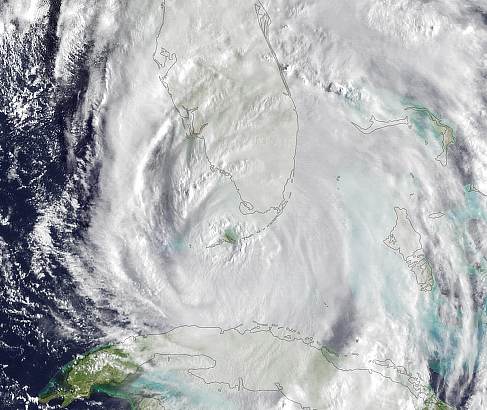Rating agency A.M. Best believes that alternative capital will take as much as $20 billion to $25 billion of the recent catastrophe loss bill, with the majority falling to the collateralized retrocession and reinsurance market, noting that this capacity has played a vital role in helping reinsurers mitigate their net losses.
 In analysing the impact of the recent catastrophe loss events on reinsurance firms, A.M. Best found that alternative capital and the ILS market has played a key role in protection reinsurers and keeping their losses largely manageable.
In analysing the impact of the recent catastrophe loss events on reinsurance firms, A.M. Best found that alternative capital and the ILS market has played a key role in protection reinsurers and keeping their losses largely manageable.
The analysis starts from a $90 billion industry insured loss, for events including hurricanes Harvey, Irma and Maria, as well as the Mexico City earthquake and analyses survey results from the global reinsurance composite companies that A.M. Best tracks.
The rating agency said that its surveys indicate that cumulative net catastrophe losses for the reinsurers total $20 billion to $25 billion, while around half the total loss, or $45 billion, was retained by the primary insurance market.
That leaves another $20 billion to $25 billion, which A.M. Best says falls to alternative capital, with the majority of that being in the form of collateralized retrocession.
It’s a significant chunk of the overall industry loss, at somewhere around 22% to one-quarter of the overall bill being picked up by ILS funds and capital market investors in reinsurance risk.
It’s also a significant chunk of the estimated $90 billion or so of alternative capital that existed in the ILS market in advance of the hurricane events, signalling a roughly 20% to 25% draw-down on ILS backed capacity.
The ILS fund market had a draw-down in September alone of over -9%, according to the ILS Advisers Index, while the Mercury Capital MiCRIX reflects more than -15% of draw-down across a basket of industry loss warrants (ILW’s) from the hurricane loss events.
But getting to almost 25% of ILS capital being lost is hard, without the ability to look-through to all collateralized reinsurance and retrocession vehicles, including the reinsurer owned sidecars (many of which are assumed to have suffered major losses).
Hence it’s not possible to validate A.M. Best’s data here, but as the rating agency suggests, these losses have to have fallen somewhere.
Whatever the eventual level of catastrophe loss to hit the ILS market, the final bill won’t be understood for some months to come, the encouraging aspect is that alternative capital has played a really important role in paying disaster losses and has shored up the reinsurance industry through the protection it provides to it.
A.M. Best said, “It appears that alternative capital has played a meaningful role in mitigating the net loss impact from this series of extreme events, mostly in the form of collateralized reinsurance.”
This meaningful role is key in helping reinsurers to come out the other side of these losses without their balance-sheets being decimated.
Even after this protection, A.M. Best believes some of the reinsurers it tracks could have had a hit of as much as 15% of their equity from the losses and expects reinsurers overall to have their least profitable year since 2011.
We haven’t ever seen such large losses hit the insurance and reinsurance sector without their being at least some fear of companies going under and alternative capital can be thanked for providing core protection that has mitigated the impacts of losses for many affected re/insurers.
“What’s different with these particular hurricane events, however, is the material participation by alternative capital and the unique features of that capacity. The response from this capacity will have a definite effect on the dynamics of the market both near and long term,” A.M. Best commented.
ILS capacity is so far responding as it should, with fund managers paying claims, reserving and dealing with the issues of locked up collateral, all while raising funds to continue trading forwards at the January renewals.
In the face of such large and meaningful losses for the ILS sector that’s impressive.
Join us in New York in February 2018 for our next ILS conference
 View all of our Artemis Live video interviews and subscribe to our podcast.
View all of our Artemis Live video interviews and subscribe to our podcast.
All of our Artemis Live insurance-linked securities (ILS), catastrophe bonds and reinsurance video content and video interviews can be accessed online.
Our Artemis Live podcast can be subscribed to using the typical podcast services providers, including Apple, Google, Spotify and more.
































